10 rock garden ideas – experts explain how to add a contemporary edge
Rock garden ideas will help transform the design of your landscaping, and here's how the experts make them work
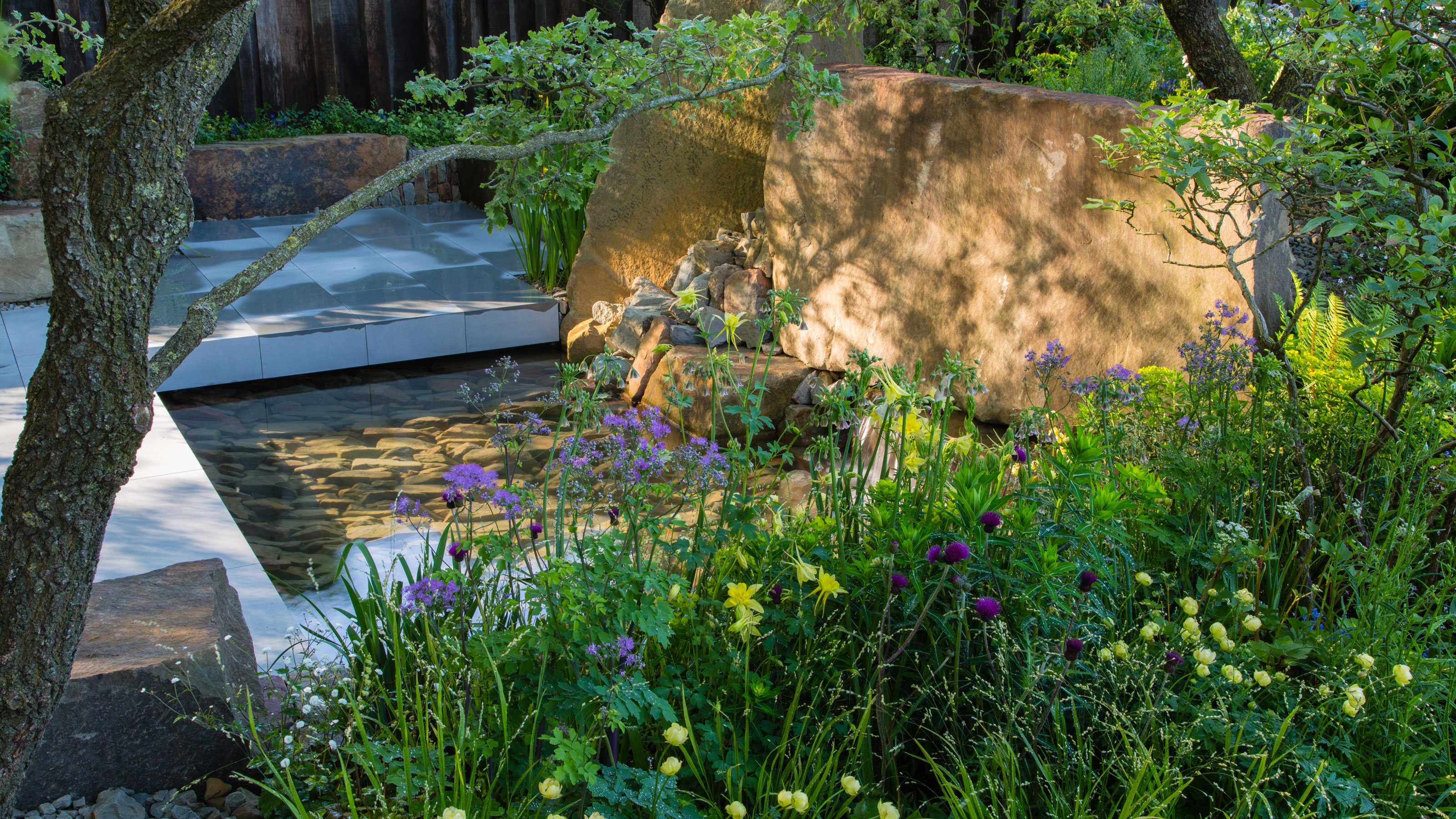
The latest rock garden ideas tap into the current trend for sustainable living. Picking up local preowned stones with a well-worn feel for landscaping projects without the miles is the planet-friendly choice.
Stacked and tumbled rocks are a favorite when it comes to creating naturalistic landscapes. Moss creeps over the edges of boulders, creating the impression a garden has been there since millennia.
Rocks also help you to create a more sensory outdoor space to enjoy. Using rocks, stones and pebbles in your landscaping introduces a combination of interesting textures from smooth to ridged and rippled, and just demand to be stroked especially if covered in springy moss or a tapestry of low-growing alpines. Combine your rock garden ideas with water and you hit the sensory jackpot.
Smaller projects are easily carried out yourself. But if you plan on going large you will need the help of a professional landscaper. Rock gardens are not difficult to make but actually making them can be hard work. Choose rocks that harmonise best with the natural environment, making sure the colour and texture works in the space.
Rock garden ideas have come a long way since the dusty suburban rockeries of old. Here's are round-up of the latest looks.
Rock garden ideas to add extra dimension to your design
1. Add boulders to borders
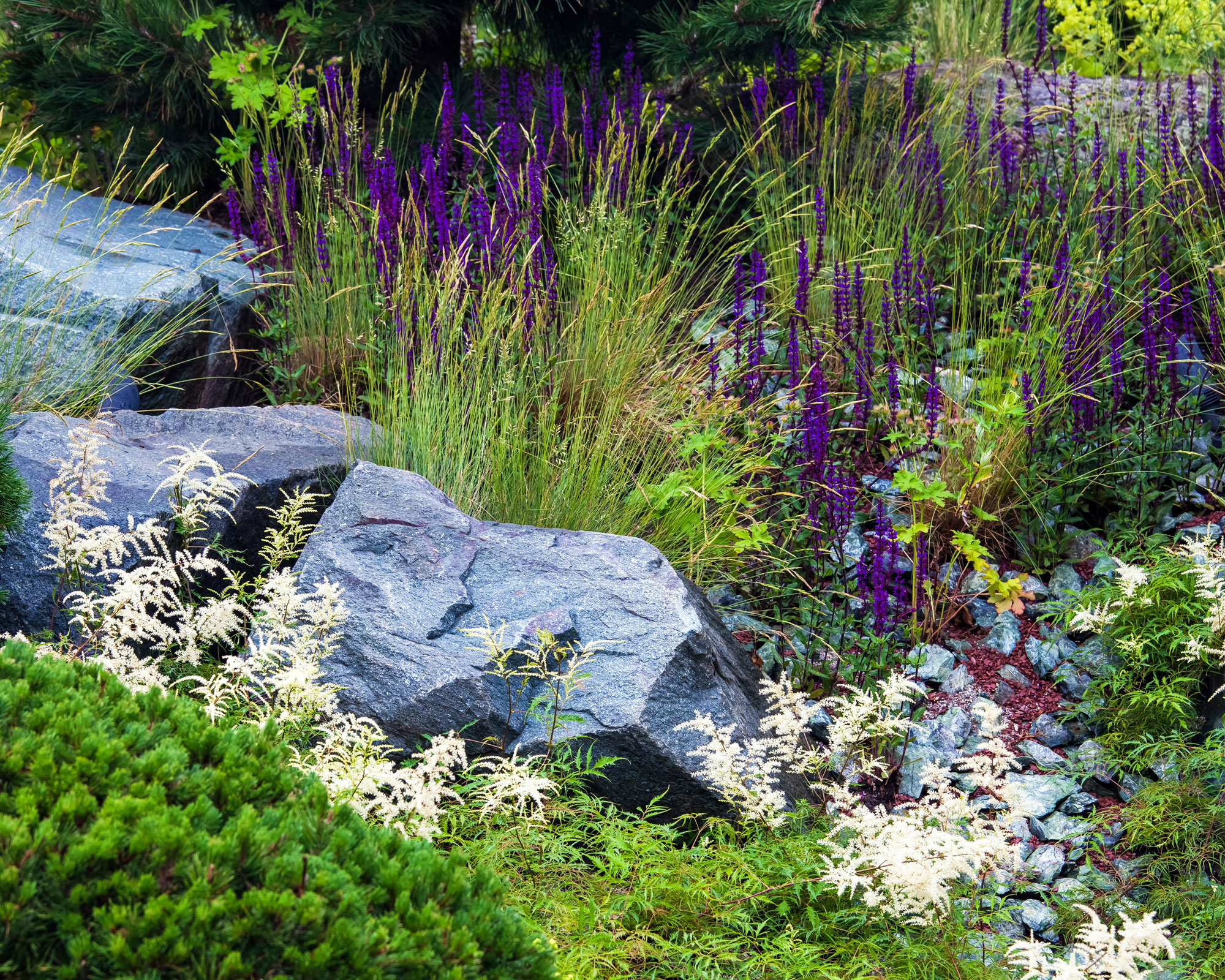
Large boulders add height and interest to flower beds, create a naturalistic feel, and offer plenty of planting pockets and crevices. Smaller rocks used as mulch help suppress weeds to create an attractive but low maintenance garden.
First decide on the type of rock you want to use. Go for the sustainable option and source local rock, stone or slate for a look that will be a natural fit with your surroundings. Going direct to the supplier is a good idea as it means you get to choose the actual pieces you like rather than taking delivery of a random mix ordered online.
The Livingetc newsletters are your inside source for what’s shaping interiors now - and what’s next. Discover trend forecasts, smart style ideas, and curated shopping inspiration that brings design to life. Subscribe today and stay ahead of the curve.
It's also possible to buy crates of second-hand natural stone from salvage yards and sites like preloved that come with a lived-in look. Choose stone in a range of sizes so your rock garden looks as natural as possible, selecting large stones to act as ‘keystones’. For best results place rocks so they tilt backwards, taking into account any strata lines so that they flow in the same direction.
2. Use stones to design a path
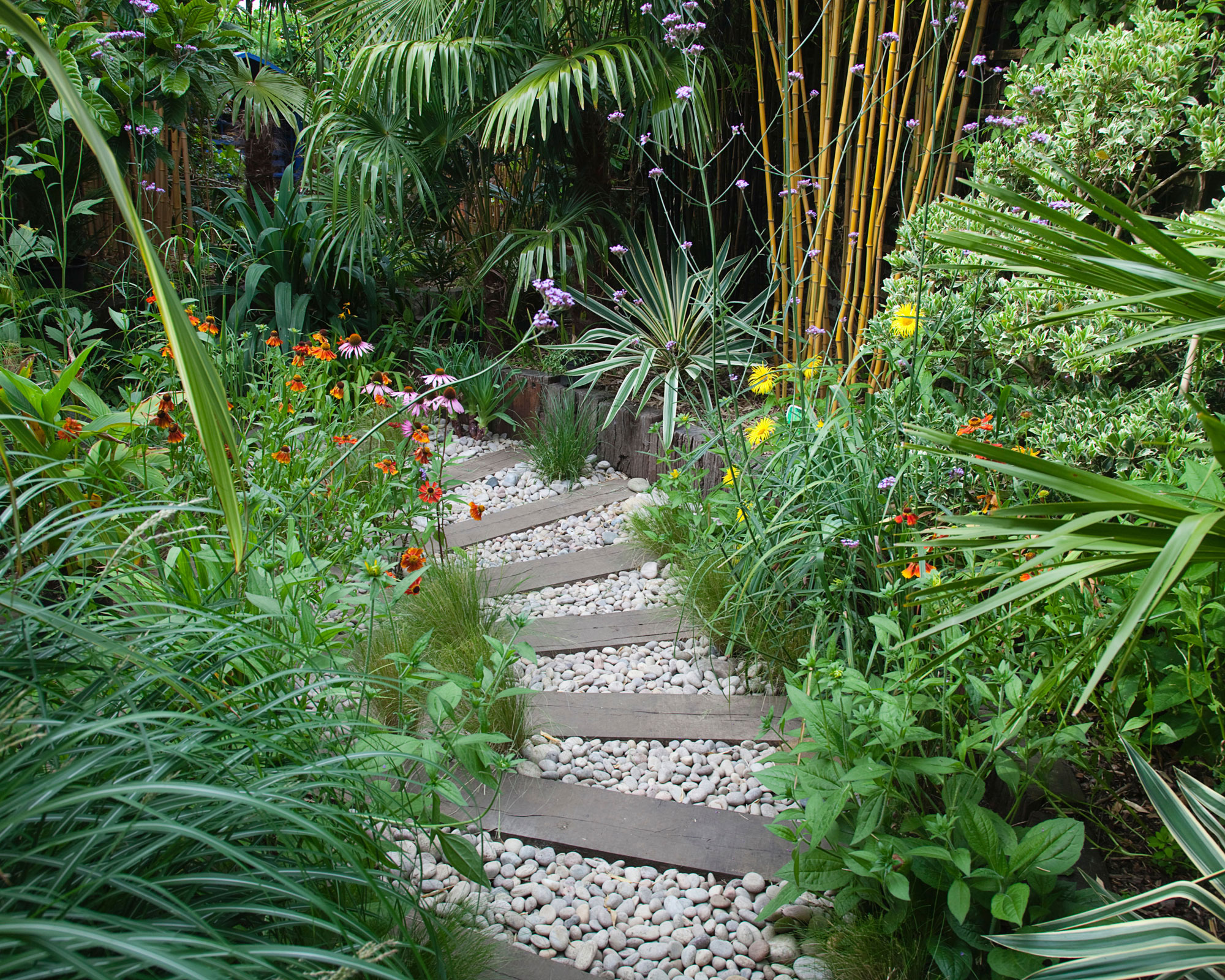
A stepping stone path invites you on a journey of discovery, especially if the ultimate destination is hidden from view.
Using a combination of decorative pebbles and flat stepping stones in a path design makes a distinctive garden feature. This is a style where designers often use a mix of materials to introduce contrasting textures such as rough and smooth.
These can include different combinations of natural rocks, stones and pebbles, as well as manufactured pavers and planks. Just remember you need a smooth and flat surface that's easy to walk on in addition to the decorative infill.
3. Introduce a zen aesthetic

This tranquil garden in the heart of Greenwich Village includes a koi pond edged with rocks. Combined with graceful acer trees this creates the feeling of calmness that's key to Japanese-inspired spaces. Acers are one of the ornamental trees that pair best with rock garden ideas too.
Rocks are a fundamental element in the Japanese garden. They’re rarely used alone. Instead they are found in carefully placed repeat patterns. If you like the idea of keeping ornamental koi in your pond, the best kind of rocks to use are granite, sandstone or slate. The rocks help to keep the water cleaner and clearer. Limestone isn't recommended because it can alter the pH level of the water.
Rounded flat rocks can be placed around the edge of the pond to create an overhanging shelf. This will provide shade for the koi on sunny days.
4. Light up rocks at night

Add a touch of nighttime magic to your rock garden ideas with outdoor lighting. Lights focused on rocks will throw into relief their craggy, rustic beauty to add drama to the garden once dusk falls.
This garden by landscape designer Anthea Harrison uses natural drifts of planting to complement the hard landscaping and soften the geometric lines of the contemporary looking house. Central to the scheme is an eye-catching boulder.
Installing a spotlight behind a boulder creates a silhouette effect. Choose lights that can be angled upwards from the ground, such as uplighting and backlighting. These are two of the best ways to illuminate your chosen rocks.
Opt for low-voltage lights to conserve electricity and light your backyard in a planet-friendly manner. Or choose solar lights that absorb sunlight and power themselves without electricity at night.
5. Introduce a contrasting focal point

In urban landscape design smooth, hard surfaces tend to dominate. But garden designers often use the trick of introducing a contrasting material to maximize texture and interest, such as this distinctive boulder.
While matching in terms of color palette the boulder adds an interesting contrast to the smooth regularity of the rest of the materials used in this hard landscaping design. Planting frames the boulder to enhance it further.
Rocks combined with soft cushions of planting is a low maintenance landscaping choice that suits most spaces.
6. Make a feature with a rock filled gabion

The metal gabion (the word means 'cage' in Italian) is a great choice for rock garden ideas and works particularly well for landscaping projects in small urban gardens. They are filled with rocks then wired together to create an instant 'dry stone wall' that's an affordable way to create boundaries, as well as being much stronger and quicker to install than any other type of rock wall.
'I think the big pros are they’re economical, they have little to no maintenance, they’re easy to install and they are very long lasting, and they can be created fairly quickly,' says Randy Jurgensen, president of Decorative Stone Solutions, based in Escondido, California.
Gabions come in various sizes so there's one that will work for most landscaping projects. The weight and strength of the filled cages makes them ideal for decorative walls, and they can also be used for sitting on. Use with bold color and architectural plants to create a modern look.
7. Match plants and rocks

If you're adding rocks to a plant's growing environment such as using them as a decorative finish for raised beds or tall planters, it's good to be aware of one or two pointers when choosing which rocks to match with which plants.
Plants always harmonise best with the rocks of their natural habitat. Sandstone enhances acid-loving plants like heathers, while limestone is a good match for lime-loving plants like pinks. The colours and textures of the plants and rocks will suit each other too, forming a cohesive design that sits together well.
Plants in warm reds and oranges blend well with sandstone, while yellow and white flowers work with greyish limestone. And of course green works with everything.
8. Use rocks as seats

If you've ever sat on a large rock on the beach as you take a moment for some quiet reflection you'll know how good it feels. Now you can recreate the sensation at home with a large pebble seat or two that will add a very contemporary aesthetic to your garden. When not in use as outdoor furniture they work as pieces of garden art too, adding a sculptural note to the deck.
Polished pebble seats are made from natural stone and come in a variety of finishes, each with its own unique markings in the stone. You can also get naturally formed, irregular granite boulders to use as seats, which are a little more rugged looking, as well as hand-cast Cornish granite aggregate designs that are polished to achieve a high-gloss shine.
9. Introduce a dreamy wildlife pool
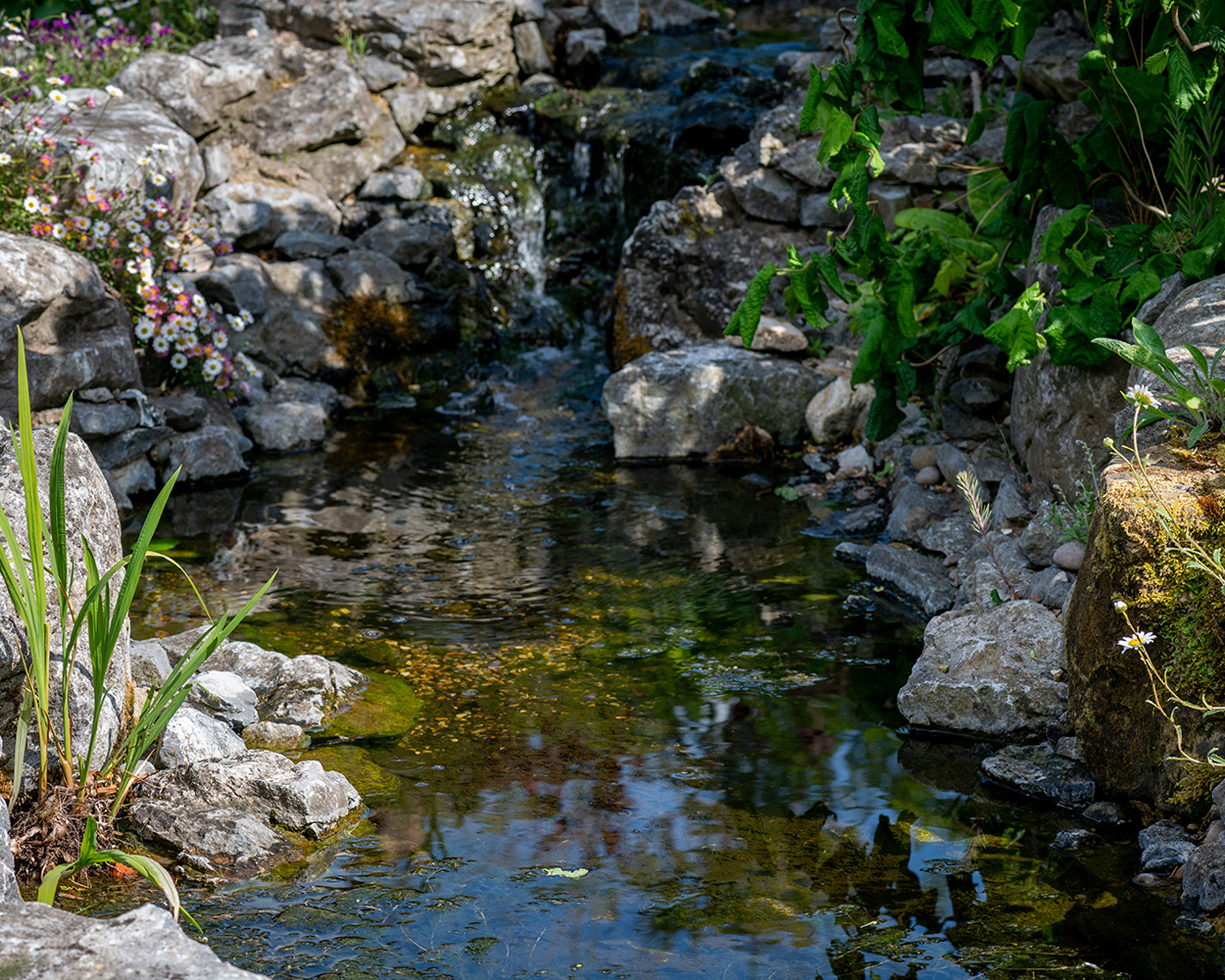
Even the tightest urban space can accommodate a small pool for inviting wildlife and introducing an extra soothing element. Water is the natural partner for rock garden ideas especially if you want to enhance the sensory garden experiences on offer outdoors.
'Allow your mind to connect with the water, noticing reflections and movement. As you sit a while longer, if fish are present, they will relax and come out from hiding,' says award winning garden designer Fiona Stephenson, who studied at The Inchbald School of Design and is known for creating sensory outdoor spaces.
'I wanted to create a natural feel with this pond design, one that is inviting to wildlife, so I included shallow areas for birds to bathe and drink, and for newts and frogs to access.' The look of the rocks is softened with a tumble of Mexican fleabane daisies and cool, velvety moss.
10. Use rocks as an edging device
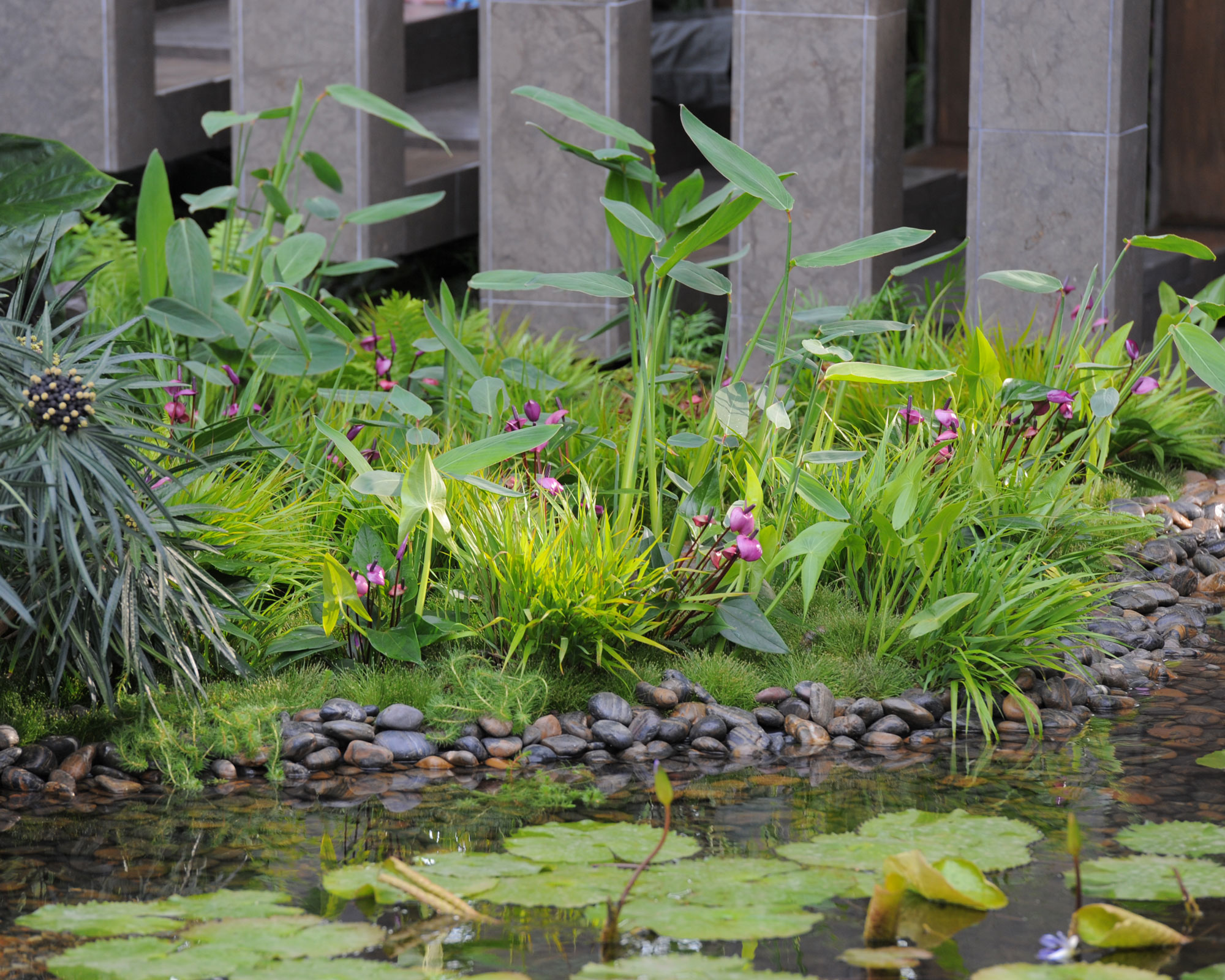
You can use rocks, stones and pebbles to edge pretty much anything, from beds and borders to ponds and paths. A wavy border of smooth stones is one of our favorite pond edging ideas, adding an interesting element as it works as a backdrop to the water to cast interesting reflections as well as a way to finish planting with an edge.
Stones and pebbles can also be used to define the edge of steps, create a border in planting beds, and outline paths and walkways. There's a wide choice but river-worn pebbles are particularly nice, especially when paired with water.
How do you choose the right rocks?

We asked garden designer and professional landscaper Rachel Bailey, who trained at the Royal Botanic Garden in Edinburgh, Scotland, for her expert input on how to choose materials for a rock garden:
- Work with local rocks to connect the house with the garden and/or with the surrounding landscape.
- Work with a variety of sizes including some big rocks for impact. This is especially important in small gardens where the inclination is to shy away from large rocks in favour of smaller ones. Larger rocks will add more drama and impact, creating a cleaner, less fussy design.
- Observe how rocks look in nature - their orientation, grouping and how they seem to come out of the ground. When you bed your rocks into the soil group smaller ones with larger ones in natural clusters.
- Use the rocks as a foil for your planting and you can use them to create planting pockets for alpine plants.
What can you plant in a rock garden?

Naturalistic planting is a good fit with rock garden ideas, and you can't beat the sharply delineated leaves of masses of hosta plants to create an interesting contrast to your rock and stone landscaping.
There are several other go-to groups to choose from when it comes to the best planting ideas for rock gardens.
Succulents and cacti are a natural fit, as are plants that thrive in coastal areas such as aubretia, saxifrage and thyme.
As the name suggests alpine plants work well in rock garden ideas due to their natural mountainous habitat, and ability to colonise cracks and crevices.
Ornamental grasses are another firm favorite as they also look good gracing a rocky aesthetic and they're an easy low maintenance garden choice too.
Lifestyle journalist Sarah Wilson writes about garden design and landscaping trends. She has studied introductory garden and landscape design, and also has an RHS Level 2 qualification in the Principles of Plant Growth and Development. She is a regular contributor to Livingetc.com, and also writes for Homes & Gardens, Country Living, Country Homes & Interiors, and Modern Gardens magazines. Her first job was at Elle magazine, during which time a trip to the beautiful La Colombe d'Or in St-Paul-de-Vence led to an interest in writing about all things botanical. Later as lifestyle editor at Country Homes & Interiors magazine one of the highlights were the run of captivating country gardens that were featured.